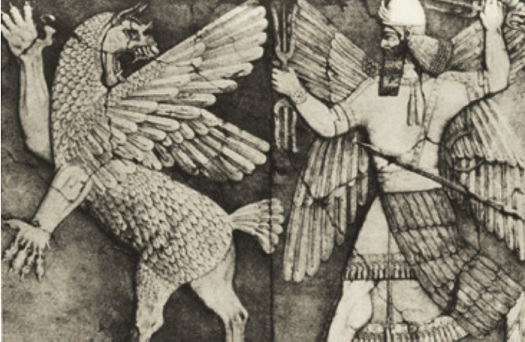Poet and educator Jane LeCroy was part of T&W’s Common Core Leadership Team of writers who developed creative writing teaching resources that are aligned with the requirements of the Common Core State Standards for English Language Arts in science and history/social studies. In this lesson plan, LeCroy offers ideas for addressing a question from New York City’s K–8 framework for science: How do human body systems function to maintain homeostasis? T&W thanks the William T. Grant Foundation and The Cerimon Fund for their generous support of the Common Core resources initiative.
Lesson Overview
Download: My Heart
Lesson Objectives:
Students will:
- Learn about Haruspicy
- Reflect on the multiple meanings of the word heart
- Read poems about the heart that demonstrate scientific and figurative language
- Compare and contrast two poems
- Write poems that incorporate scientific knowledge of the heart as well as figurative and poetic language about the heart
Common Core State Standards:
(Refer to the English Language Arts Standards > Language > Grade 7 and the English Language Arts Standards > Writing > Grade 7)
CCSS.ELA-LITERACY.L.7.5A Interpret figures of speech (e.g., literary, biblical, and mythological allusions) in context.
CCSS.ELA-LITERACY.W.7.3.D Use precise words and phrases, relevant descriptive details, and sensory language to capture the action and convey experiences and events.
Guiding Questions:
- What are the different meanings for the word “heart”?
- What do you know about the scientific functioning of the heart?
- Why do you think the heart came to symbolize love?
- Who do you love in your life? What experiences of people/events/things have touched your heart?
LESSON
Warm-up activity:
Ask students to place their hands on their hearts for a moment, and to listen to / feel their heartbeat during a moment of quiet. Ask students to notice what thoughts or feelings arise in their bodies and minds. Ask students to share the images, phrases, or words that came to mind and make a list on the chalkboard/SMART Board.
Introduction:
Introduce students to the idea that our bodies and our minds are connected. Invite students to entertain the idea that how we think, how we act, and what happens to us can affect our physical bodies. Use the following questions to get students’ minds warmed up to this idea. Ask students to write down a response to each of these questions, or have a conversation as a group.
- How does your body feel when you are happy? Sad? Angry?
- Have you heard that if your palms itch, you’re going to get some money soon?
- Have you heard that if your ears are ringing, it means that someone is talking about you?
- If you have a lump in your throat, does it mean that you might cry?
- Are the eyes the windows to the soul?
Our bodies have a history of telling us things both literally and figuratively. Haruspicy is a form of divination by natural phenomena, especially from inspection of the entrails of animal sacrifices. Ancient Romans used to “read” the entrails of the dead in order to predict and explain life in an empowering way. In the same way, a palm reader would interpret the lines of your hand; or someone could “read” coffee grounds or tea leaves in the bottom of a cup or the stars at the time of your birth to reveal insights to your life.
Transition:
Why do you think the heart came to symbolize love?
Model/Mentor Text:
Distribute the Heart Definition and the Heart Poems handouts. Ask students to read the definitions of “heart.” Ask students if they were familiar with all those meanings of the word. Invite students to continue to think about the multiple definitions as they listen to the poems.
Read the excerpt from Dr. John Celes’ poem and Christina Rossetti’s poem “A Birthday.” As students listen to and read the poems, ask them to notice when the poet uses scientific language about the human heart, and when the poet uses figurative language. Invite students to make notes on the Heart Poems handout about each author’s use of language. Compare and contrast the two poems.
Mentor Text/Analysis/Pre-Writing:
Distribute the Annotate Your Heart handout and invite students to write notes about both their scientific knowledge about the human heart, and their memories/ideas/associations about the other meanings of the word heart.
Writing Activity:
Invite students to begin to draft an ode to their heart using the language that they generated during the pre-writing activity.
Closing:
Ask a few students to share their poems with the group. After each writer reads his/her work, ask other students to reflect on any new discoveries they made either about the heart, or about the author.
Materials:
- Heart Definition Handout
- Heart Poems Handout
- Annotate Your Heart Handout
Vocabulary:
Annotate
Divination
Entrails
Figurative
Haruspicy
Heart
Multi-modal approaches:
This lesson engages students with several learning styles, including kinesthetic (engaging students with a physical warm-up), aural (listening to the heart poems), visual (using handouts with text and images), and intrapersonal (independent writing).
Jane LeCroy works as a poetry teacher in New York City schools through Teachers & Writers, and also teaches at a home school collective, and as an adjunct professor at Eugene Lang College. She is a singer/poet who records, performs regularly and tours with her main project, the avant-garde TRANSMITTING. You can find out more about her and her work at www.JaneLeCroy.com



